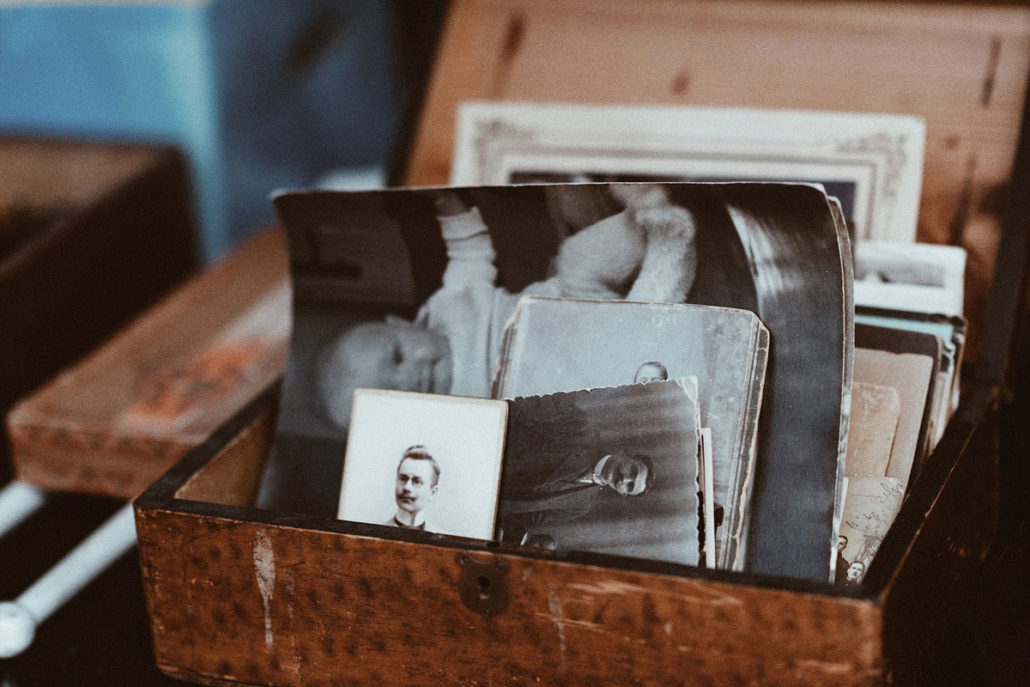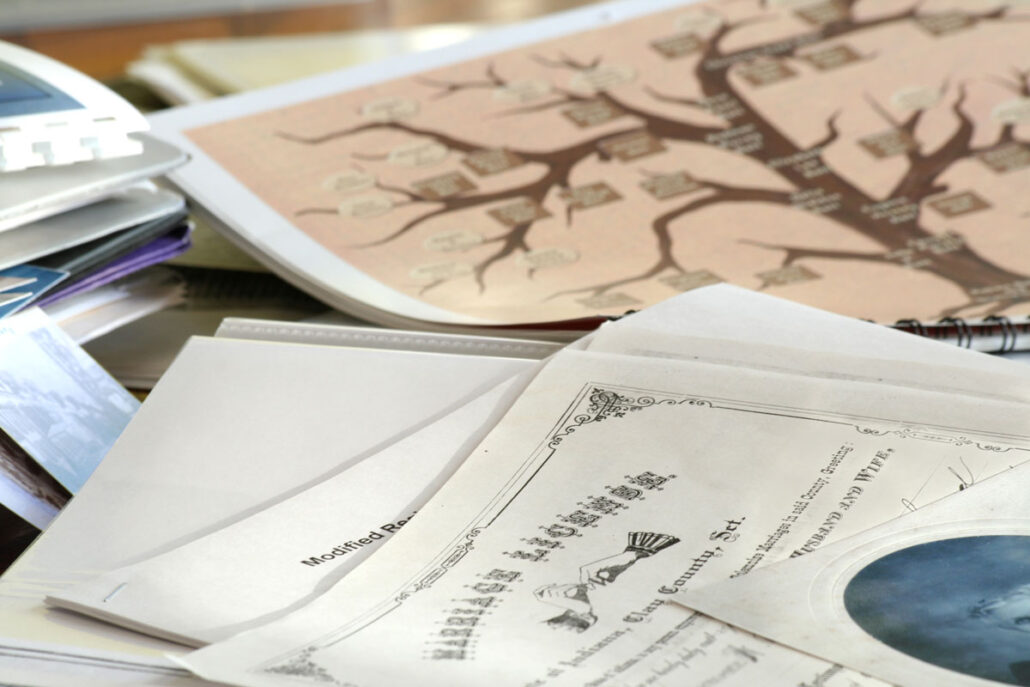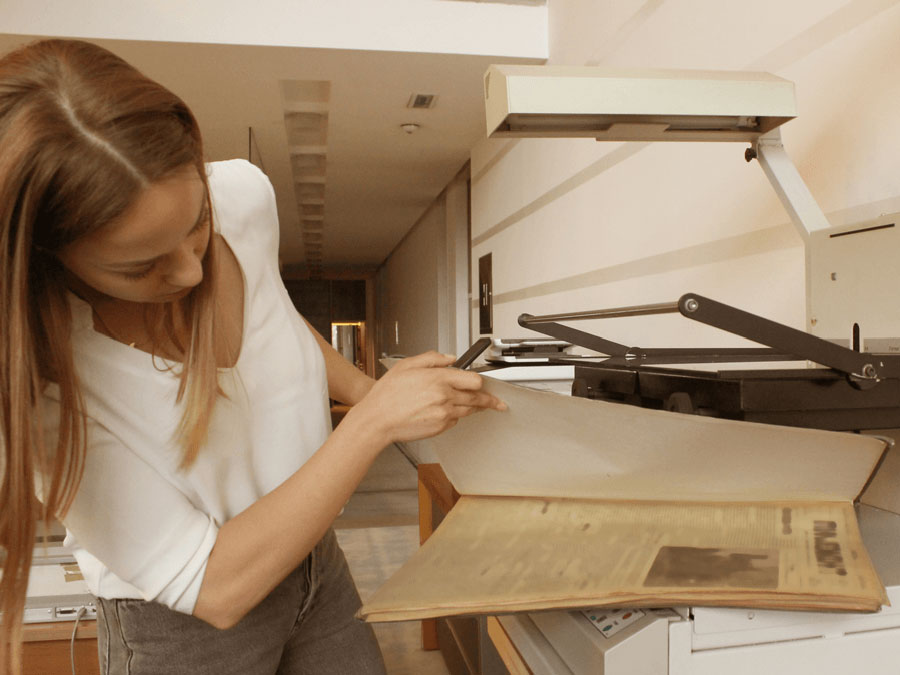
How Can Physical Preservation Protect a Collection?
Learn
How Can Physical Preservation Prevent Document Degradation?
We’ve previously discussed the importance of proper storage in preserving your collection, but where and how you store items is only part of the preservation process. How you use and maintain your collection over time is just as important to the longevity of your documents. Overhandling or inappropriate display conditions can accelerate deterioration of paper documents, but with the right knowledge and care, proper preservation is possible.

The Library of Congress offers basic guidance in the care and use of different mediums and material types.

Use and Handling of Original Documents
Often it’s the desire to use and study the items in a collection that can cause the most damage in the long run. The more a document is picked up, opened, shelved and re-shelved, the greater the risk of accidental damage. Pages can tear, drinks can spill, and contaminants can accelerate aging. Items don’t have to be forever trapped in storage to preserve them as long as proper care and handling are observed.
Don’t Over Handle
While you don’t have to keep documents in storage forever, handling old or fragile documents too much can cause damage over time. It is best to minimize use or display of delicate materials to only what is necessary. To accomplish this, make sure all items in storage are properly boxed and labeled to avoid sifting through documents to find the one you want. It’s also important to train anyone who is to handle fragile materials in the correct methods of use. If the document or book needs extra support in use, such as a V-cradle to avoid breaking the spine of a book, make sure those are readily available.
Know Your Materials
Documents have different needs depending on the materials they are made from. Paper made before the mid-19th century was made from cotton and linen rags, making them more durable than later wood-pulp paper. Likewise, wood-pulp paper made before the 1980s is more acidic and prone to faster deterioration.
For a long time, it was customary to handle paper materials with gloves as the default option to avoid leaving oily residue from direct skin contact. This is no longer the case. Damage from poor dexterity or snagging fabric is considered riskier than any possible skin contamination. Best practice now is to wash and thoroughly dry hands before handling documents. You should also avoid using hand sanitizers before handling documents, but if you must, only use water-based sanitizers.

Photographs have different needs from paper, and some processes used to develop an image are more susceptible to damage than others. Photographs also need different containers or materials (paper vs. plastic) for storage. Archival-quality containers for photographs should pass the ANSI Photographic Activity Test (PAT) and will say so on packaging or in product descriptions.
Depending on the type of photograph, different storage mediums and handling conditions are better than others. Unlike with paper documents, it is still best practice to handle photographs with non-scratching, microfiber or nitrile gloves as oils on skin are more damaging to photographs than to paper.
Does your collection need repair before digitization?
Digitization and conservation often go hand in hand. If your collection has significant damage, that can make digitization difficult or even dangerous to the stability of the document. Anderson Archival understands the needs of the physical document are as important as getting the item digitized. We partner with a local conservator to help our clients get the care their collections deserve.
Buffered Materials and Deacidification
Acids are a major problem in physical preservation of books, documents, and other paper-based media. Acids are found in the environment and can be absorbed into the paper, or from within the paper itself due to the process used to make it. As those acids react to moisture, more acids are formed, quickly deteriorating the paper.
Fortunately, there are several ways to help reduce the acid production in documents. Proper temperature and humidity while in storage and in use is the simplest way to slow acidification. The more a document is damaged by acids, the fewer options there are for recovery. Early action is the best way to prevent acidic deterioration.

Buffered storage materials are also a good way to counteract some of the acids a document absorbs. Buffered materials, such as envelopes, folders, and boxes, contain an alkaline reserve to act, as the name suggests, to buffer the document against increased acid deterioration. Archival-quality containers or organizational materials will provide information on the amount of alkaline buffer they include.
Be careful, though. Not all paper products can tolerate an alkaline reserve. Architectural blueprints, for example, can react negatively to alkaline and should be stored in unbuffered, pH neutral storage containers. Always check to see how your paper type will react to an alkaline reserve.
A more specialized way to deal with acidic paper is called deacidification. Through this process, the document or book is exposed to magnesium oxide to neutralize the acids in the paper and sometimes to infuse an alkaline reserve to prevent future acid build up. Documents or books that are already severely deteriorated may not be stable enough to go through deacidification. It is also a far more expensive measure and may not be appropriate for small or personal collections.
Displaying Artifacts
Paper documents placed on display should be prepared carefully, especially if the display will be ongoing or involve extra handling. Light, temperature, and humidity should be controlled as much as possible to avoid accelerating the deterioration of the item. A room kept below normal room temperature with about 35% humidity is ideal, and items should be kept out of direct light. Minimal light is best practice.
Not all collections are meant to be displayed to the public, though. Large private collections may be for personal use only, but sifting through paper envelopes or folders can make enjoying the collection tiresome. For collections that are to be viewed often or routinely, archival-quality plastic sleeves can be a good alternative for storage and access, especially for photographs. This allows the item to be viewed without being directly handled.
There are three types of plastic enclosures suitable for long-term preservation. The best, and subsequently most expensive, is archival polyester. It provides excellent viewing and has rigid support to protect the document or photograph. A more economical solution is polypropylene. It is just as clear, but lacks the rigid support of polyester. The last option, polyethylene, is also economical, but doesn’t have the same rigidity or clarity as the other two.
Digitization
In addition to physical preservation of a collection, digitization allows continued use of books and documents without risking any further damage through handling. By digitizing your collection, items can be viewed and studied without handling the original physical document. This allows fragile or already damaged items to remain safely in storage. It also facilitates sharing your collection, if you so choose. Digital copies can be placed on a website or cloud storage for others to access over the internet. Digitization can also improve the ability to search a collection. Through metadata and optical character resolution (OCR) an entire collection can be searched by keywords, dates, exact phrases, and more. Such easy organization and recall gives the collection new usefulness to all who access it.

No matter the condition of your collection, there are always ways to help prevent further deterioration. Start your journey by discovering the types of materials in your collection and the specific actions you can take to protect them.
Subscribe to Our Newsletter
Digital preservation is about connecting to history. We do our best to bring you the important news and personal stories you’re interested in. We’re always looking for article ideas. Come learn with us!




